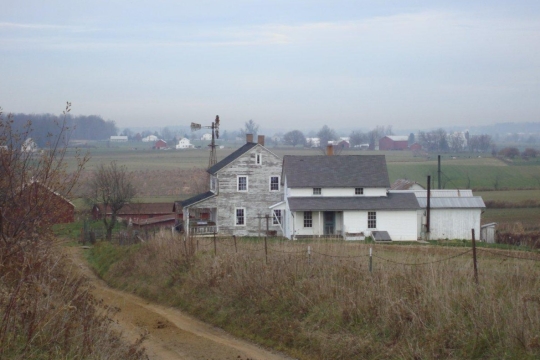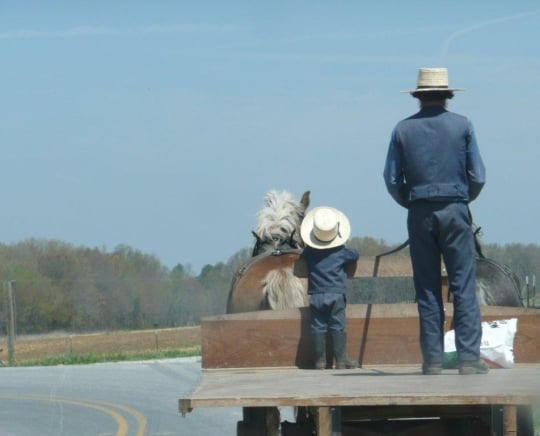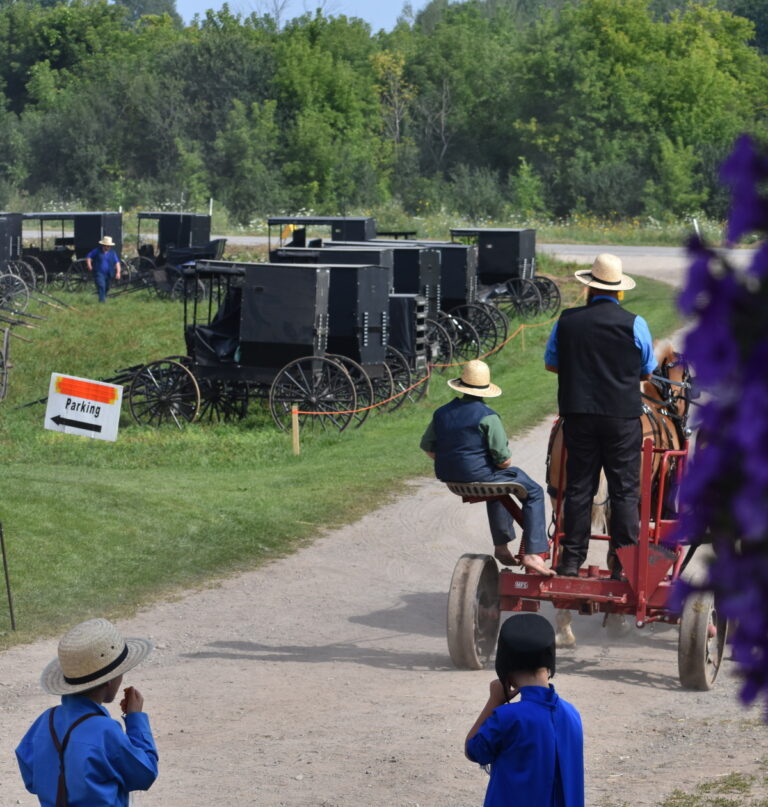Old & New

Actually, I don’t know the precise ages of these two homes, though one has certainly got a fresher-looking paint job. Taken in the Holmes County, Ohio Amish settlement. Watch the drive when it rains.


Actually, I don’t know the precise ages of these two homes, though one has certainly got a fresher-looking paint job. Taken in the Holmes County, Ohio Amish settlement. Watch the drive when it rains.

Similar Posts
I hadn’t seen today’s video until a few days ago, when Bob Rosier passed along a link. Author and Amish Cook editor Kevin Williams visited the Beeville (Bee County), Texas Amish community 2 or 3 years ago, and filmed this 8-minute piece giving a window into the settlement and their culinary traditions. Kevin’s video (now unavailable) takes you inside the community, which at the time…
The Amish settlement at Mechanicsville is one of only three Maryland Amish communities in existence. The oldest Maryland Amish settlement, at Oakland (Garrett County), was settled in 1850. Today it is a single church district in size. The Mechanicsville Amish community in southern Maryland was founded nearly a century later (1940) than the Oakland community. But today it is much larger, consisting of 8 districts,…

Did you know that the South has more states with an Amish population than any other region? First, there’s the question of what defines a region. The South of 2018 is a vast, diverse place. But I think it’s safe to say some states seem more traditionally “southern” than others. For instance, is South Carolina more southern than say Maryland? Other states sort of fit…
In “The Growth of Amish and Plain Anabaptist Communities in Kentucky” (see latest issue of JAPAS), Joseph Donnemeyer and Corey Anderson examine the development of Amish and other Anabaptist communities in the Bluegrass State. They also touch on Amish settlement (or lack thereof) in the southern states. I pulled some interesting points from the article to share with you below. Amish-Mennonites in Kentucky One thing to be aware…
It’s harvest time in Kishacoquillas Valley (aka ‘Big’ Valley) in Mifflin County, Pennsylvania. Big Valley is one of the most unique Amish settlements. The valley is populated by three main Old Order Amish groups, comprising around 30 church districts. The Byler, Renno, and Nebraska Amish are easily distinguished by their characteristic buggy-top colors–yellow, black, and white, respectively. Stay tuned for more on the Amish of…

The annual horse-and-buggy Amish population figures have been released by the Young Center at Elizabethtown College. The total Amish population is estimated at 383,565 people. That breaks down to 377,275 in the United States, 6,100 in Canada, and 190 in South America. And of course the count continues to steadily rise. If we look at the numbers from just five years ago, the Amish population…
15 Comments
Most of the conservative communities in New York that I visit have homes that look like the unpainted portion.
Tom backroadstraveller.blogspot.com/
shingles for siding
The local (SE Kansas) Amish, fairly conservative horse and buggy folk, use shingles as siding. Is more weather proof than any other kind of siding, they say, and lasts longer with easier maintenance. Sara
I love that picture and the contrast with the old and the new. Great job ~
That would be a Swartzentruber amish place. They are not allowed to have gravel on their driveways.
I’m wondering if the unpainted, fading one is the original home with the newer home being the Dawdi house.
They may have gravel if they spread it out themselves. That means they will have to load the gravel on wheelbarrows and spread it around with shovels and rakes. Nobody has time and energy to go to that bother, so they do without.
Tom, I love your NY pictures! I couldn’t make a comment because I don’t know how to put in a “profile”?
Of course I love all the Amish links especially AmishAmerica.
The many pix I have seen always have nicely painted homes.
Ia the home shown actually occupied?
I’d guess that it is George. The homes of more conservative Amish are often not kept up to the same aesthetic standards as the mainline Amish homes.
The book, An Amish Paradox, has some photos of Swartzentruber homes compared with those of “higher” orders, the difference can be quite striking.
Of course that’s probably not what is going on here — one house in this photo just seems to be in need of painting, or perhaps is newer.
I agree that they sure look like Swartzentruber homes. Red barns, overgrown fence rows, no evidence of flower beds by the house…
The architecture of the older looking home is characteristic of Swartzentruber homes as well.
Extended family
Do you think the newer looking house could have been built when a son took overthe the farm of his parents and needed a home of his own for his growing family?
These pictures are interesting. It helps remind us that there
certainly are differences in Amish farmstead scenery. This
picture reminds me of the Riceville, Iowa settlement which I
believe is very conservative Old Order, but not Swartzenbtruber.
Concerning gravel — in the Orleans, Indiana Swartz. settlement,it seems that gravel is widely used. I think especially of one
family who have a produce stand on their farm that
does a big business every season. Their driveway has been well-maintained for a long time, but about a year ago they enlarged
their parking area and brought in much, much gravel which makes
it very nice to drive around and park. May be differences in
ordnung in different Swartz. settlements. Or does it have more to do with money a household has available to pay for gravel?
The photos is beautiful and makes me home sick for a visit.